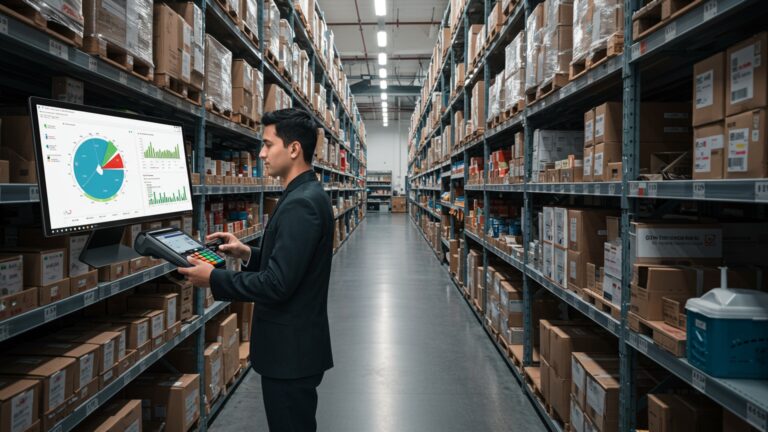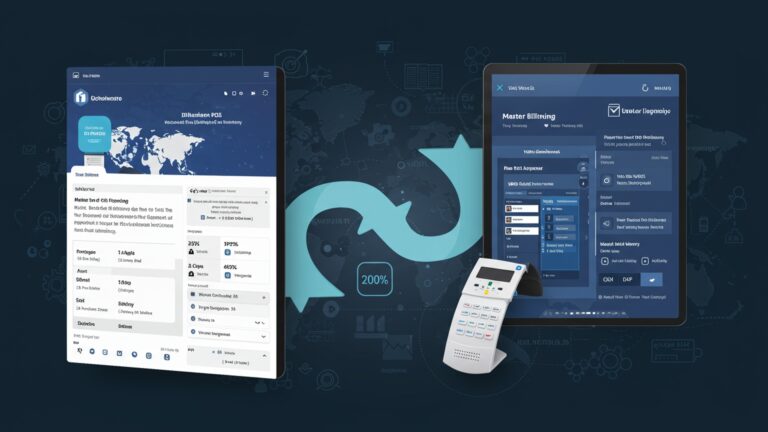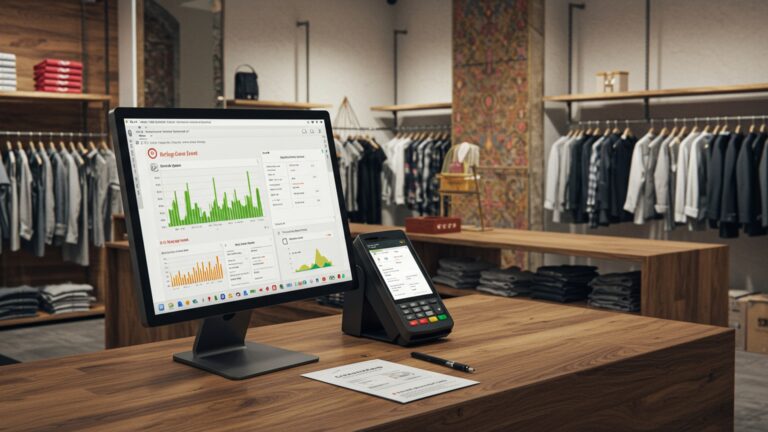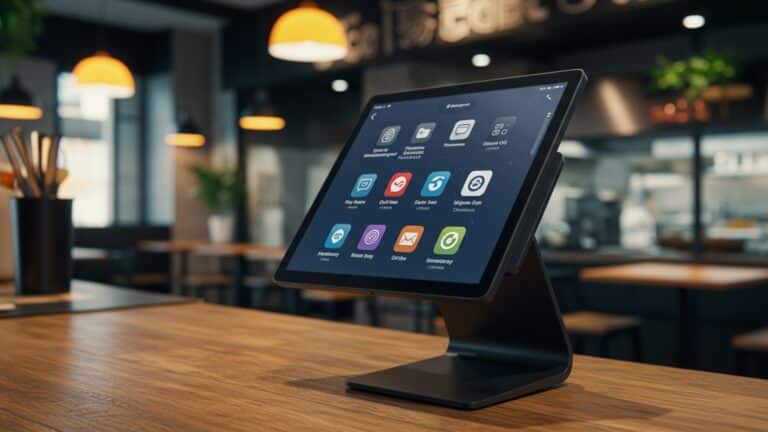How to Choose the Best POS Software in India A Comprehensive Guide
The Indian commercial landscape is rapidly evolving, pushing businesses from bustling Mumbai eateries to tech-savvy Bengaluru retail outlets towards advanced operational efficiency. Merchants are no longer simply seeking a billing system; they require the best POS software in India that can navigate the complexities of UPI-driven digital payments, intricate GST compliance. real-time inventory synchronization across multiple locations. The shift from legacy on-premise solutions to agile, cloud-native platforms is a critical trend, demanding robust analytics, seamless CRM integration. mobile accessibility to manage operations effectively, reflecting a significant leap in digital adoption accelerated by recent economic shifts.

Understanding POS Software: The Backbone of Modern Business Operations
In today’s fast-paced retail and hospitality landscape, a Point of Sale (POS) system is no longer just a cash register; it’s the central nervous system of your business. A POS system is a combination of hardware and software that allows businesses to process sales transactions, manage inventory, track customer data. much more. For businesses across India, from a bustling chai stall to a multi-chain supermarket, investing in the right POS software can be a game-changer, automating mundane tasks and providing invaluable insights.
The core function of a POS system is to facilitate sales. When a customer makes a purchase, the POS system calculates the total, processes the payment. updates inventory levels. But its utility extends far beyond just ringing up sales. It helps streamline operations, improve customer service. ultimately, drive profitability. For anyone looking for the best POS software in India, understanding these foundational aspects is crucial.
- Hardware Components
- Software Components
- Payment Integration
Typically includes a monitor or tablet, barcode scanner, receipt printer, cash drawer. often a card reader for electronic payments.
This is the brain of the system, running on the hardware. It manages transactions, inventory, customer data. integrates with other business tools.
Seamlessly connects with various payment gateways (UPI, credit/debit cards, mobile wallets) to offer diverse payment options to customers, which is particularly essential in India’s diverse payment ecosystem.
Identifying Your Business Needs: The First Step Towards the Best POS Software in India
Before you even begin to research specific vendors or features, the most critical step is to thoroughly comprehend your own business’s unique requirements. What works for a small cafe might not suit a large electronics store. This self-assessment will narrow down your options significantly and help you pinpoint the best POS software in India for your specific context.
- Industry-Specific Considerations
- Retail
- Restaurants/Cafes
- Salons/Spas
- Grocery Stores
- Business Size and Scalability
- Budget Constraints
- Existing Infrastructure
Requires robust inventory management, barcode scanning, loyalty programs. multi-store capabilities. Think about a clothing boutique needing size/color matrix options or an electronics store needing serial number tracking.
Needs table management, kitchen order ticketing (KOT), menu customization, ingredient-level inventory. integration with food delivery platforms.
Focuses on appointment scheduling, staff management, client history. package deals.
Demands fast checkout, weighing scale integration, bulk item management. supplier management.
Are you a single-outlet shop or planning to expand to multiple branches? Your chosen POS must be able to grow with you. A cloud-based solution often offers better scalability for multi-location businesses.
Define your budget for both initial setup and ongoing subscription/maintenance costs. Remember, the cheapest option isn’t always the best value in the long run.
Do you have existing hardware you wish to integrate? Is your internet connectivity reliable enough for cloud-based solutions? These factors can influence your choice between an on-premise or cloud-based system.
Core Features to Look For in the Best POS Software in India
While basic transaction processing is a given, the true power of modern POS software lies in its advanced features that streamline operations and provide critical business intelligence. When evaluating the best POS software in India, prioritize these functionalities:
- Sales & Transaction Management
- Quick and intuitive checkout process.
- Ability to handle various payment methods (cash, card, UPI, mobile wallets).
- Returns, exchanges. refunds processing.
- Discount and promotion management.
- Gift card functionality.
- Inventory Management
- Real-time stock tracking across multiple locations.
- Automatic reorder points and alerts for low stock.
- Barcode generation and scanning.
- Supplier management and purchase order creation.
- Batch tracking and expiry date management (crucial for F&B, pharmaceuticals).
- Customer Relationship Management (CRM)
- Capture customer details (name, contact, purchase history).
- Implement loyalty programs (points, discounts).
- Targeted marketing campaigns based on purchase behavior.
- Reporting & Analytics
- Sales reports (daily, weekly, monthly, by product, by employee).
- Inventory reports (stock movement, bestsellers, slow-movers).
- Customer insights.
- Profit and loss statements.
- Ability to export data for further analysis.
- Employee Management
- Time clock functionality for staff.
- Sales performance tracking for individual employees.
- Access control and permissions based on roles.
- Payment Processing Integration
- Integration with local payment gateways (e. g. , Razorpay, PayU).
- Support for UPI, QR codes. various digital wallets.
- EMV compliance for card payments.
- Multi-store Capabilities
- Offline Mode
- Customization & Flexibility
This is often cited as one of the most valuable features.
Case Study Snippet: “A small apparel store owner in Bangalore struggled with manual stock counts, often leading to overselling popular items or having dead stock. After implementing a POS with robust inventory features, they reduced stock discrepancies by 30% and improved their order accuracy significantly.”
Data is gold.
Essential for Indian businesses.
If you have or plan to have multiple outlets, the POS should allow centralized management of inventory, pricing. reporting across all locations.
Crucial for areas with unreliable internet. The system should continue functioning and sync data once connectivity is restored.
Can the software be tailored to your specific workflows or unique product offerings?
Types of POS Software: Cloud-Based vs. On-Premise
When selecting the best POS software in India, a fundamental decision is between cloud-based and on-premise solutions. Each has its own set of advantages and disadvantages.
| Feature | Cloud-Based POS (SaaS) | On-Premise POS |
|---|---|---|
| Data Storage | On remote servers, accessible via internet. | On local servers within your business premises. |
| Accessibility | Anywhere, anytime, on any device with internet. | Primarily on-site; remote access often requires complex VPN setups. |
| Cost Structure | Monthly/annual subscription fees; lower upfront cost. | Higher upfront cost for software license and hardware; lower ongoing fees. |
| Maintenance & Updates | Handled by the vendor; automatic updates. | Managed by your IT team or external contractors; manual updates. |
| Scalability | Easier to scale up or down with business needs. | Can be challenging and costly to scale. |
| Security | Managed by vendor with enterprise-grade security protocols. | Depends entirely on your internal IT security measures. |
| Internet Dependency | Requires reliable internet (though many offer offline mode). | Less dependent on continuous internet. still beneficial for updates/integrations. |
| Customization | Generally less flexible for deep customization. | More flexibility for extensive customization if you have the resources. |
For most small to medium businesses in India, cloud-based POS systems are often the preferred choice due to their lower upfront costs, ease of maintenance. accessibility. But, businesses with stringent data security requirements or unreliable internet might lean towards an on-premise solution.
Evaluating Technical Aspects for the Best POS Software in India
Beyond features, the underlying technical architecture and user experience are critical for long-term satisfaction and efficiency. A technically sound POS solution ensures smooth operations and minimizes downtime.
- Ease of Use & User Interface (UI/UX)
- Security Features
- Data Encryption
- Access Control
- PCI DSS Compliance
- Regular Backups
- Integration Capabilities
- E-commerce Platforms
- Accounting Software
- Loyalty Programs
- Delivery Apps
- CRM Systems
An intuitive interface means less training time for staff and fewer errors. Conduct trials and observe how easily your team navigates the system. Cluttered or complex interfaces can slow down checkout lines and frustrate employees.
Protecting sensitive customer and business data is paramount.
Ensures data is unreadable if intercepted.
Role-based permissions to limit what each employee can see or do.
For processing credit card payments, this is non-negotiable.
Cloud POS typically handles this automatically.
Your POS shouldn’t be an isolated island. It should seamlessly connect with other essential business tools.
For businesses with an online store (e. g. , Shopify, WooCommerce).
(e. g. , Tally, QuickBooks, Zoho Books) to automate financial reporting.
Standalone or integrated solutions.
For restaurants (e. g. , Zomato, Swiggy).
For advanced customer management.
A good POS provider will offer APIs (Application Programming Interfaces) or pre-built connectors for popular software. For example, if you want to integrate a custom loyalty program, you might look for an API that allows your developers to link it:
// Example of a hypothetical API call for a POS system // This is illustrative and not actual code. POST /api/v1/customers/add_loyalty_points Headers: { "Authorization": "Bearer YOUR_API_KEY", "Content-Type": "application/json" } Body: { "customer_id": "CUST12345", "points_to_add": 100, "transaction_id": "TRN67890" }
Ensure the software supports a wide range of hardware, especially if you plan to reuse existing equipment or source locally available, cost-effective devices.
Can the system handle increased transaction volumes, more product SKUs, or additional locations without performance degradation?
Support and Training: A Non-Negotiable for the Best POS Software in India
Even the most advanced POS software is only as good as the support behind it. Issues can arise at any time. quick, effective resolution is crucial to prevent business disruption.
- Customer Support
- Availability
- Channels
- Local Language Support
- Response Time
- Training Resources
- Are there comprehensive online tutorials, video guides, or knowledge bases?
- Does the vendor offer initial on-site or remote training for your staff?
- Are there refresher courses available?
- Updates and Maintenance
Is 24/7 support offered, especially during peak business hours?
Phone, email, live chat, dedicated account manager?
In a diverse country like India, support in Hindi or regional languages can be a huge advantage.
What are the guaranteed response and resolution times?
comprehend the vendor’s policy on software updates, bug fixes. security patches. For cloud solutions, these are usually automatic and included in the subscription. For on-premise, you’ll need a clear plan for managing them.
Cost Considerations: Beyond the Sticker Price
The cost of a POS system involves more than just the initial purchase price. A holistic view of all potential expenses will prevent surprises down the line and help you identify the best POS software in India that fits your budget.
- Software Licensing/Subscription Fees
- Cloud-based
- On-premise
- Hardware Costs
- Installation & Setup Fees
- Transaction Fees
- Support & Maintenance Costs
- Hidden Costs
- Customization requests.
- Integration with niche third-party software.
- Additional features or modules (e. g. , advanced reporting, loyalty programs) that might not be in the base plan.
- Internet connectivity upgrades if you opt for a cloud solution.
Monthly or annual subscription per terminal or per location.
One-time license fee, which can be substantial.
Includes POS terminals (tablets, touchscreens), barcode scanners, receipt printers, cash drawers. card readers. These can be purchased from the vendor or third-party suppliers.
Some vendors charge for initial setup, data migration. configuration.
Payment gateway fees are typically separate but are a recurring cost associated with POS usage. Compare rates from different payment processors.
For on-premise systems, ongoing support contracts are often extra. For cloud, it’s usually bundled.
Trial and Demo: Your Hands-On Evaluation
Never commit to a POS system without thoroughly testing it. A free trial or a comprehensive demo is an invaluable opportunity to see if the software truly aligns with your operational flow.
- Importance of Free Trials
- Key Aspects to Test During a Demo/Trial
- Daily Operations
- Inventory Management
- Reporting
- Payment Processing
- Ease of Learning
- Customer Support
Many providers of the best POS software in India offer free trials. This allows you to test the software with your actual products, prices. staff.
Process sales, returns, discounts. See how quickly transactions are completed.
Add new products, adjust stock levels, conduct a mock inventory count.
Generate various reports and assess their clarity and utility.
Ensure seamless integration with your preferred payment methods.
Observe how quickly your staff picks up the system.
Test their responsiveness and helpfulness with real questions.
Personal Anecdote: “During my consulting days, I once advised a client who skipped the trial. They later discovered their chosen POS couldn’t handle their unique product bundling requirements, leading to a costly switch within six months. Always, always test drive!”
Making the Final Decision for the Best POS Software in India
After gathering all the insights, conducting trials. comparing options, it’s time to make an informed decision. This final stage involves due diligence and strategic thinking.
- Check Reviews and Testimonials
- Ask for References
- Negotiate Pricing
- Read the Contract Carefully
- Future-Proofing
Look for honest feedback from other businesses, especially those in your industry and location. Websites like G2, Capterra. even local business forums can be good sources.
A reputable vendor should be able to provide references from existing clients. Contact these businesses and ask about their experience with the software and the vendor’s support.
Don’t hesitate to negotiate. Sometimes, vendors offer discounts, especially for annual commitments or if you’re purchasing multiple licenses.
Pay close attention to terms regarding data ownership, cancellation policies, support level agreements (SLAs). any hidden fees.
Choose a system that is regularly updated, innovates with new features. aligns with future technological trends. This ensures your investment remains relevant for years to come. The landscape for the best POS software in India is constantly evolving, so adaptability is key.
Conclusion
Choosing the ideal POS software in India isn’t merely a transaction; it’s a strategic investment that shapes your business’s future. You’ve journeyed through understanding essential features, evaluating vendor support. considering scalability. My personal tip, stemming from years of observing diverse Indian businesses, is to always prioritize a trial period. This hands-on experience allows you to truly gauge user-friendliness and how seamlessly it integrates with your daily operations, from managing peak festive season rushes to processing digital payments like UPI, a significant current trend. Remember, the best POS is one that feels like an extension of your team, not just a tool. It should empower you to make data-driven decisions and, ultimately, maximize your retail sales. I’ve witnessed countless businesses transform by making an informed choice, leading to streamlined operations and enhanced customer experiences. Don’t rush this decision; embrace it as an opportunity to future-proof your venture. Your careful consideration today will pave the way for sustained growth and efficiency tomorrow.
More Articles
Master Selecting the Best POS Software in India Your Essential Guide
Maximize Profit Learn 7 Smart Inventory Management Strategies for Indian POS
7 Essential Benefits of Online Ordering POS Systems in India
Optimize Your Restaurant Operations How to Use POS Software Effectively
How to Choose the Best POS Software for Your Grocery Store A Practical Guide
FAQs
Why do Indian businesses even need POS software these days?
In today’s competitive market, a good POS system does way more than just process sales. For Indian businesses, it helps manage inventory efficiently, track customer data for better service, simplifies GST compliance. gives you crucial sales reports to make smarter decisions. It streamlines your whole operation, saving time and money.
What are the absolute must-have features in a POS for an Indian shop?
Definitely look for robust inventory management, especially for multiple SKUs. GST compliance for billing and reporting is non-negotiable. It should also handle various payment methods popular in India (like UPI, cards. cash). Employee management, loyalty programs. detailed sales analytics are also super helpful for growth.
How much should I expect to pay for decent POS software in India?
The cost varies a lot! You can find basic cloud-based systems starting from a few hundred rupees a month for small shops, going up to several thousands for more feature-rich or enterprise-level solutions. On-premise systems might have a higher upfront cost but no recurring monthly fees. Always check what’s included in the price – like support, updates. hardware compatibility.
My business is growing fast. Will my POS software keep up?
That’s a great point! You need a scalable solution. Look for software that can easily add more terminals, users, or locations as you expand. Cloud-based systems often have an edge here, as they’re typically easier to scale up or down. Make sure it can handle increased transaction volumes and complex inventory needs without slowing down.
What kind of customer support should I expect from a POS provider in India?
Good support is crucial, especially in India where local language assistance can be a big plus. Look for providers offering multiple channels like phone, email. chat. Check their response times and if they offer on-site support if needed. Don’t forget to ask about training for your staff – that’s often overlooked but super essential.
Can this POS integrate with my existing accounting software or e-commerce store?
Absolutely, integration is key for a seamless workflow. Many modern POS systems can connect with popular accounting software (like Tally or Zoho Books, common in India) and e-commerce platforms. This saves you tons of manual data entry and ensures all your financial records are consistent. Always ask about specific integrations relevant to your business.
Should I go for a cloud-based POS or one installed directly on my computer?
Both have pros and cons. Cloud-based POS (SaaS) is generally more flexible, accessible from anywhere, offers automatic updates. usually has a subscription model. On-premise software gives you more control over your data, might be better if your internet is unreliable. requires manual updates and IT maintenance. For most small to medium Indian businesses today, cloud is often the more convenient and cost-effective choice.






